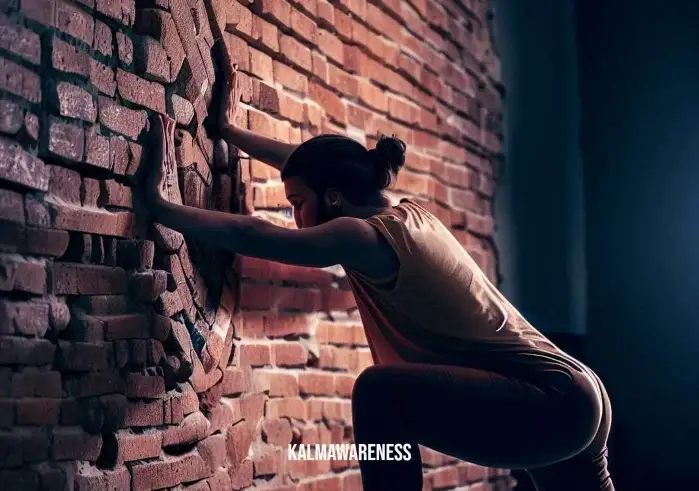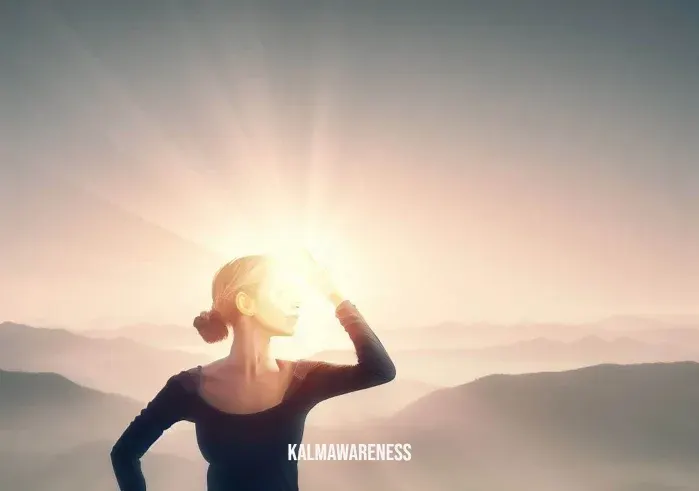Yoga Wheel Pose Guide: Unleashing the Power of Backbends
Introduction
Welcome to the ultimate guide on mastering the Yoga Wheel Pose! Whether you’re a seasoned yogi or just starting your yoga journey, the Yoga Wheel Pose, also known as Chakrasana, is a magnificent backbend that offers numerous benefits for your body and mind. In this article, we will delve into the magic of this pose, step-by-step instructions on how to perform it correctly, and explore the different variations and categories related to the Yoga Wheel Pose. So, let’s roll into this empowering backbend adventure!
Pose Name: Yoga Wheel Pose
Original Name: Chakrasana
Difficulty Level: Intermediate
Pose Category: Backbend
Exercise Duration: Beginners: 30 seconds – 1 minute | Advanced: 1 – 2 minutes
Unveiling the Yoga Wheel Pose
The Yoga Wheel Pose is a captivating backbend that gracefully opens up the heart and stretches the entire front body, while also providing an invigorating massage to the spine. As you gracefully arch your back and rest your palms and feet on the ground, you’ll experience a liberating sense of expansion and a connection with your inner strength.
To perform the Yoga Wheel Pose, follow these step-by-step instructions:
- Warm-up: It’s crucial to warm up your body before attempting any deep backbends. Start with some gentle stretches, especially focusing on your shoulders, spine, hip flexors, and quadriceps.
- Preparation: Sit on your yoga mat with your knees bent and your feet hip-width apart. Place the Yoga Wheel behind you, aligned with your spine.
- Hand Placement: Position your hands behind your shoulders on the Yoga Wheel, fingers pointing towards your feet. Your fingertips should be facing away from your body.
- Lift and Arch: Press firmly into your palms and feet, engaging your core and lifting your hips off the ground. Slowly begin to arch your back and lift your chest towards the ceiling. Let the Yoga Wheel support your backbend.
- Leg Alignment: Keep your knees in line with your ankles, and avoid letting them splay outward. Engage your inner thighs to maintain stability.
- Breathe: Take deep, steady breaths as you hold the pose. Relax your neck and allow your head to fall gently, but if you feel any discomfort in your neck, consider placing a cushion or folded towel under your head.
- Release: When you’re ready to come out of the pose, tuck your chin towards your chest, and slowly lower your back onto the mat. Hug your knees to your chest and take a moment to rest before moving on to the next pose.

Yoga Wheel Pose Guide: Unlocking the Benefits and Variations
Benefits of the Yoga Wheel Pose
As you roll into the Yoga Wheel Pose, you open the gateway to a plethora of benefits that contribute to your overall well-being. This invigorating backbend goes beyond the physical realm and extends its positive impact to your mental and emotional state. Let’s explore the numerous advantages of incorporating the Yoga Wheel Pose into your practice:
- Spinal Flexibility: The deep backbend in Chakrasana helps improve the flexibility of your spine, enhancing your overall range of motion and reducing stiffness.
- Heart Opening: As you arch your back and lift your chest towards the sky, you open up the heart center, promoting feelings of compassion, love, and vulnerability.
- Strengthened Core: Engaging your core muscles in the pose builds strength and stability, benefiting your entire core area.
- Improved Posture: Regular practice of the Yoga Wheel Pose encourages better posture by realigning the spine and correcting rounded shoulders.
- Chest and Shoulder Stretch: This pose stretches the chest, shoulders, and front body, releasing tension in the shoulders and promoting better breathing.
- Energy Boost: The backbend stimulates the nervous system and invigorates the body, leaving you feeling refreshed and energized.
- Mood Enhancer: Backbends are known to elevate mood and reduce feelings of anxiety and depression, promoting a sense of emotional balance.
- Confidence Booster: As you conquer the Yoga Wheel Pose, you gain a sense of accomplishment and confidence in your yoga practice.
Who Cannot Do the Pose
While the Yoga Wheel Pose offers a myriad of benefits, it may not be suitable for everyone. Individuals with the following conditions or limitations should avoid attempting this pose:
- Back Injuries: If you have a history of back injuries, herniated discs, or any spinal issues, avoid the Yoga Wheel Pose as it can exacerbate the condition.
- Shoulder Problems: Those with shoulder injuries or shoulder impingement should refrain from performing this backbend, as it may strain the shoulders.
- Wrist Pain: The pose requires weight-bearing on the wrists. If you experience wrist pain or injuries, avoid practicing the Yoga Wheel Pose.
Who is Not Recommended to Do the Pose
While some individuals can perform the Yoga Wheel Pose with caution and modifications, it is not recommended for the following individuals:
- Pregnant Women: Pregnant women should avoid deep backbends like Chakrasana to protect their changing bodies and avoid potential strain on the abdominal area.
- High Blood Pressure: If you have high blood pressure or hypertension, consult your healthcare provider before attempting this pose, as it can cause a spike in blood pressure.
- Vertigo or Dizziness: Individuals experiencing vertigo or dizziness should skip this pose, as the backbend can further disorient them.
Variations for Different Levels of Experience
The beauty of yoga lies in its adaptability and inclusivity. If you’re new to the Yoga Wheel Pose, variations allow you to ease into the posture gradually. On the other hand, experienced yogis can explore advanced variations to deepen their practice. Here are some variations for different levels:
- Beginners: For beginners, it’s essential to use props like blocks or bolsters to support your backbend. You can also place the wheel against a wall for added stability.
- Intermediate: As you progress, try lifting one leg off the ground while holding the pose to challenge your balance and strength.
- Advanced: Advanced practitioners can explore full expression by extending both legs straight up towards the sky in a variation known as “Inverted Yoga Wheel Pose.”
- One-Arm Variation: For an extra challenge, attempt the pose using only one arm while keeping the other arm extended behind you.
Remember to approach variations mindfully and listen to your body. Respect your current level of practice and gradually work towards more advanced options.

Yoga Wheel Pose Guide: Unraveling the History and Spiritual Significance
History of the Yoga Wheel Pose
Embark on a journey through time as we explore the roots of the Yoga Wheel Pose. While ancient yoga texts might not specifically mention the Yoga Wheel Pose by name, backbends and heart-opening postures have been a part of traditional Hatha Yoga practices for centuries. The modern manifestation of the Yoga Wheel Pose can be credited to the visionary yoga teacher and entrepreneur, Sri Dharma Mittra, who introduced the use of yoga wheels in the 1970s.
The introduction of yoga wheels revolutionized the way yogis approach backbends, providing support and ease in deepening their practice. Today, the Yoga Wheel Pose has become a beloved asana that captures the essence of yoga’s evolution and adaptability.
The Spiritual Significance of the Yoga Wheel Pose
Beyond its physical benefits, the Yoga Wheel Pose holds profound spiritual significance that resonates with yogic philosophy. This heart-opening backbend is believed to activate the Anahata Chakra, or the Heart Chakra. In yogic traditions, the Heart Chakra represents love, compassion, and emotional balance. As you arch your back and open your heart in the Yoga Wheel Pose, you tap into the energy of the heart center, fostering a deeper connection with yourself and others.
The Yoga Wheel Pose also embodies the concept of surrender and letting go. As you surrender to the pose, you learn to release emotional blockages, allowing yourself to experience vulnerability and openness. This surrender parallels the yogic principle of Ishvara Pranidhana, surrendering to a higher power or divine essence.
Tips for Getting the Most out of the Pose
To fully embrace the beauty and benefits of the Yoga Wheel Pose, consider these tips for a more enriching experience:
- Mindful Breathing: Focus on your breath during the pose. Inhale deeply to expand your chest, and exhale slowly to ease into the backbend.
- Engage the Core: Activate your core muscles to support your lower back and maintain stability throughout the pose.
- Gradual Progression: If you’re a beginner, take your time to progress into deeper backbends. Avoid pushing your body beyond its limits and honor your unique journey.
- Warm-up: Prioritize a thorough warm-up before attempting the pose to prepare your body for the backbend.
- Listen to Your Body: Pay attention to how your body responds to the pose. If you feel any pain or discomfort, modify the pose or come out of it gently.
Common Mistakes to Avoid
While the Yoga Wheel Pose can be a transformative posture, it’s essential to be mindful of common mistakes to prevent injuries and ensure a safe practice:
- Overarching the Lower Back: Avoid hyperextending the lower back, as it can strain the spine. Engage your core to support the backbend.
- Collapsing Shoulders: Keep your shoulders drawn back and away from your ears. Avoid collapsing into the pose.
- Locking Elbows: Avoid hyperextending your elbows and maintain a soft bend to protect your joints.
- Rushing into the Pose: Take your time to set up the pose properly and progress gradually into the backbend.
Modifications for People with Injuries or Limited Flexibility
The beauty of yoga lies in its adaptability for all practitioners. If you have injuries or limited flexibility, consider these modifications to experience the essence of the Yoga Wheel Pose:
- Use Props: Place a folded blanket on the Yoga Wheel for added support and cushioning.
- Supported Bridge Pose: If the full backbend is too intense, practice a supported bridge pose with the Yoga Wheel under your sacrum.
- Wall Assistance: Perform the Yoga Wheel Pose with your feet against a wall for stability and support.
Poses Complementary to the Yoga Wheel Pose
To create a well-rounded yoga practice, consider incorporating these complementary poses into your routine:
- Child’s Pose (Balasana): A gentle forward bend that counteracts the backbend, providing a calming stretch for the spine.
- Cobra Pose (Bhujangasana): Another heart-opening pose that helps strengthen the back muscles and stimulates the heart center.
- Camel Pose (Ustrasana): A deeper backbend that offers an extension of the spine and opens the chest.
- Puppy Pose (Uttana Shishosana): A preparatory pose that stretches the shoulders and spine.
- Bridge Pose (Setu Bandhasana): A backbend that strengthens the back and opens the chest.



